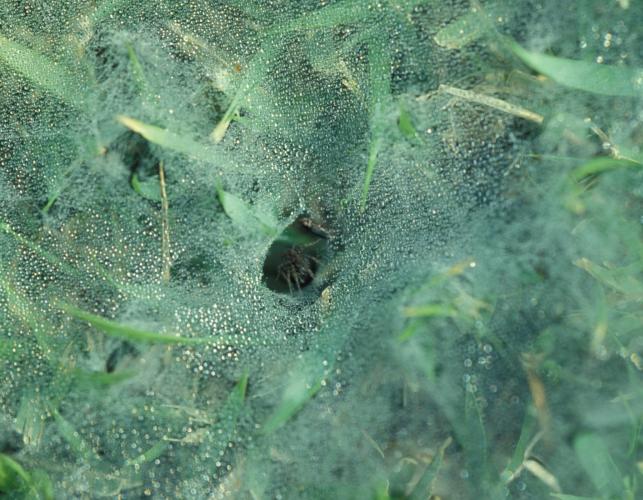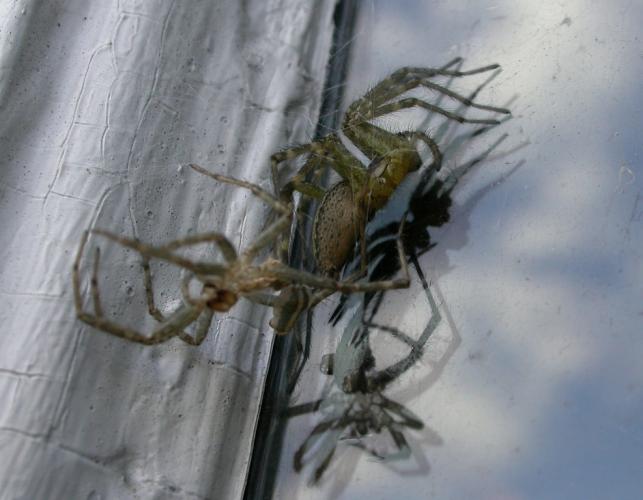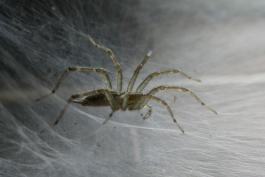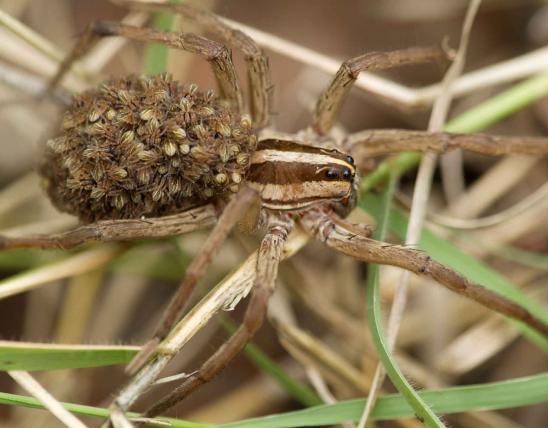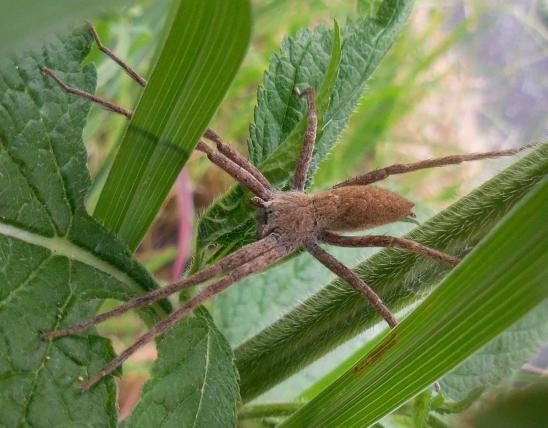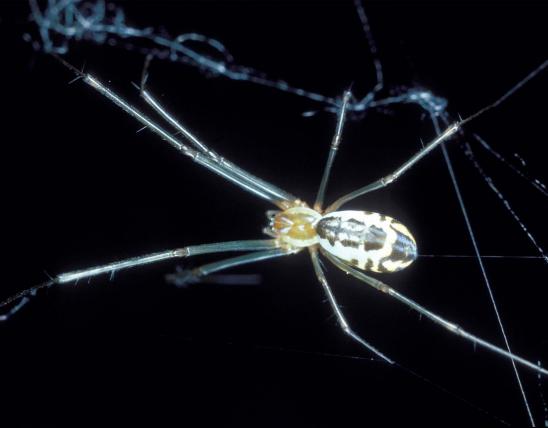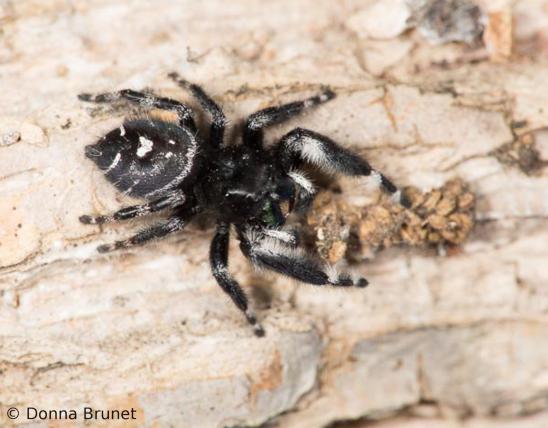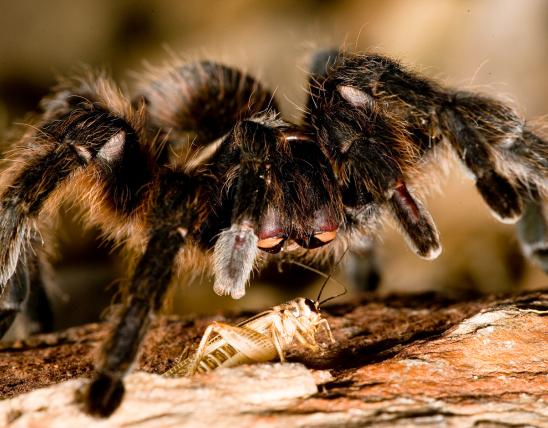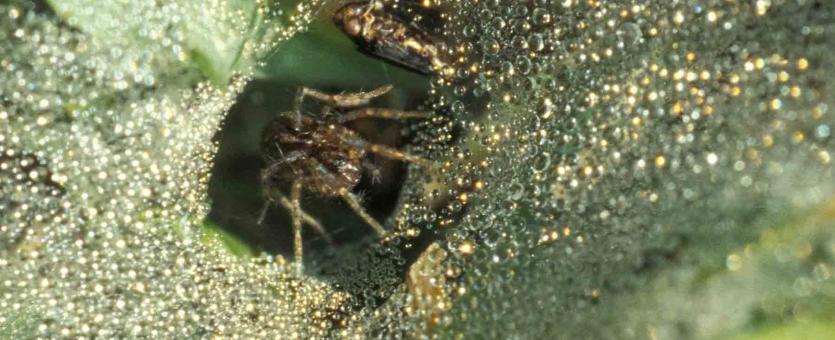
The unique web of grass spiders is more often noticed than the spider itself. The web is sheetlike, usually positioned horizontally, with a funnel leading downward to a shelter (a rock crevice or dense vegetation). Though it is often smaller, the sheet may be up to 3 feet wide and the funnel portion over a foot long.
Grass spiders have a pair of broad, dark, brownish bands running lengthwise adjacent to a lighter middle band on the lightly haired and roundish carapace. The legs are cream and dark yellowish brown. The abdomen is oblong, brown, with a broad, reddish-brown, zigzag stripe with a cream-colored border on both sides. The spinnerets are noticeably long.
Three common Missouri species of funnel weavers are Agelenopsis naevia, A. pennsylvanica, and A. emertoni. Their similar color patterns make them difficult to distinguish.
Length: females about ½ to ¾ inch (not including legs); males are slightly smaller.

Statewide.
Habitat and Conservation
These spiders typically build webs several inches above the ground in short grasses and in the window wells of outbuildings. They are common in lawns. Grass spiders hide in the concealed area of the funnel and then dash out onto the sheet portion of the web to capture an insect caught in or walking across the silken platform.
Food
Beetles, harvestmen, moths, and small butterflies are frequent food items. Grass spiders dart quickly from the funnel and must quickly decide whether a vibration on the web is a food item, a fallen leaf, or something dangerous to be hidden from.
Life Cycle
As a general rule, spiders hatch from eggs in spring and spend the growing season eating, maturing, mating, and laying eggs. Females are capable of creating webs; males are not. Females continue creating egg cases as long as the weather holds out. As temperatures cool in fall, their metabolism slows, and they generally die when it freezes. Egg cases overwinter, and spiderlings hatch in spring.
Human Connections
Spiders prey on numerous insects that are pests to humans. The web of grass spiders is not sticky, and it can be amusing to tap gently with a twig on the surface of the web, prompting the spider to rush out of her tunnel. She quickly realizes she's been duped and dashes back into hiding.
Ecosystem Connections
These little hunters help control the populations of the many species they consume. Meanwhile, they, and their eggs and young, often are eaten by other predators. The funnel not only enables these spiders to surprise their prey, but also helps them hide from their many predators.


